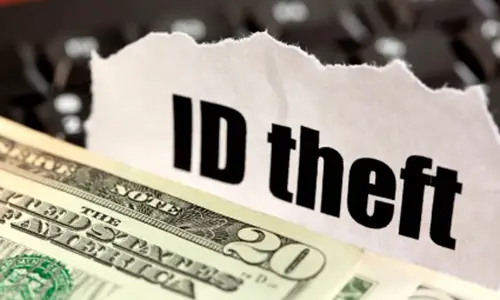One of the fastest-growing white-collar crimes in American today is Identity theft. In 2003, about 10 million people were victims of identity theft. An identity thief will steal key pieces of a victim’s identifying information (e.g., Social Security number, credit card or bank account numbers, or driver’s license number). The information stolen is then used to commit crimes such as fraudulently withdrawing money from a savings account, buying a car or other merchandise, and opening credit card accounts or a cell phone plan in the victim’s name.
Fact 1: Identity thieves will go through your garbage, the trash of a business, or public dumps. They might work –or pretend to work- for legitimate companies; medical offices, clinics, pharmacies, or government agencies, and try to convince you to reveal personal information. Some of the identity thieves pretend to represent an institution you trust and try to get you to reveal personal information by email or phone.
Fact 2: Signs that you may have been the victim of identity theft are:
- You see withdrawals from your accounts that you cannot explain.
- You are missing bills or other mail.
- Debt collectors begin calling you about a debt that you have not committed.
- Your credit report has unfamiliar accounts or charges.
- A health plan refuses to cover you because your records indicate a condition that you do not have.
- The IRS notifies you that you have filed more than one tax return in your name, or that you received income from an employer you haven’t worked for.
Fact 3: If you receive an application for a “preapproved” credit card in the mail and discard it without tearing up the enclosed materials, a criminal can retrieve the materials and try to activate the cards for their own use without your knowledge.
Fact 4: In recent years, criminals have used the Internet to obtain identifying data, such as passwords or bank account information. Many people will respond to “spam” unsolicited Email because it promises them some benefit but requests identifying data, most people do not realize that in many cases, the requester has no intention of following through with the promise. The criminals have been able to obtain a large amount of personal data be using computer technologies.
Fact 5: One of the top priorities of the IRS is stopping identity theft and refund fraud. In 2014 the IRS expanded their efforts to better protect taxpayers and help victims; they assigned more than 3,000 IRS employees to work on identity theft-related problems. They also provide training to more than 35,000 employees who work with taxpayers to recognize identity theft indicators and to help those victimized by identity theft.
Fact 6: From 2011 through November 2013, the IRS has stopped 14.6 million suspicious returns, and has protected over $50 billion in fraudulent refunds.
Fact 7: In Fiscal Year 2013, the initiated 1,492 identity theft criminal investigations, this was an increase of 66 percent over investigations initiated in Fiscal Year 2012. Sentences and indictments doubled in Fiscal Year 2013 and the average prison term was 38 months to 26 years.
Fact 8: Congress passed the Identity Theft and Assumption Deterrence Act to deal with the increasing problems of identity theft in 1998.
Fact 9: A few steps to take to protect yourself:
- Lock your mailbox and be sure to stop mail when you’re on vacation for more than a few days.
- Shred your trash with a cross cut shredder.
- Be careful the information you give out about yourself in public, especially while on your cell phone.
- Protect your computer with a firewall, anti-virus software or a spyware remover.
Fact 10: The FTC reported that only 4% of victims mentioned they had stolen mail as the source of personal information.











Leave a Reply